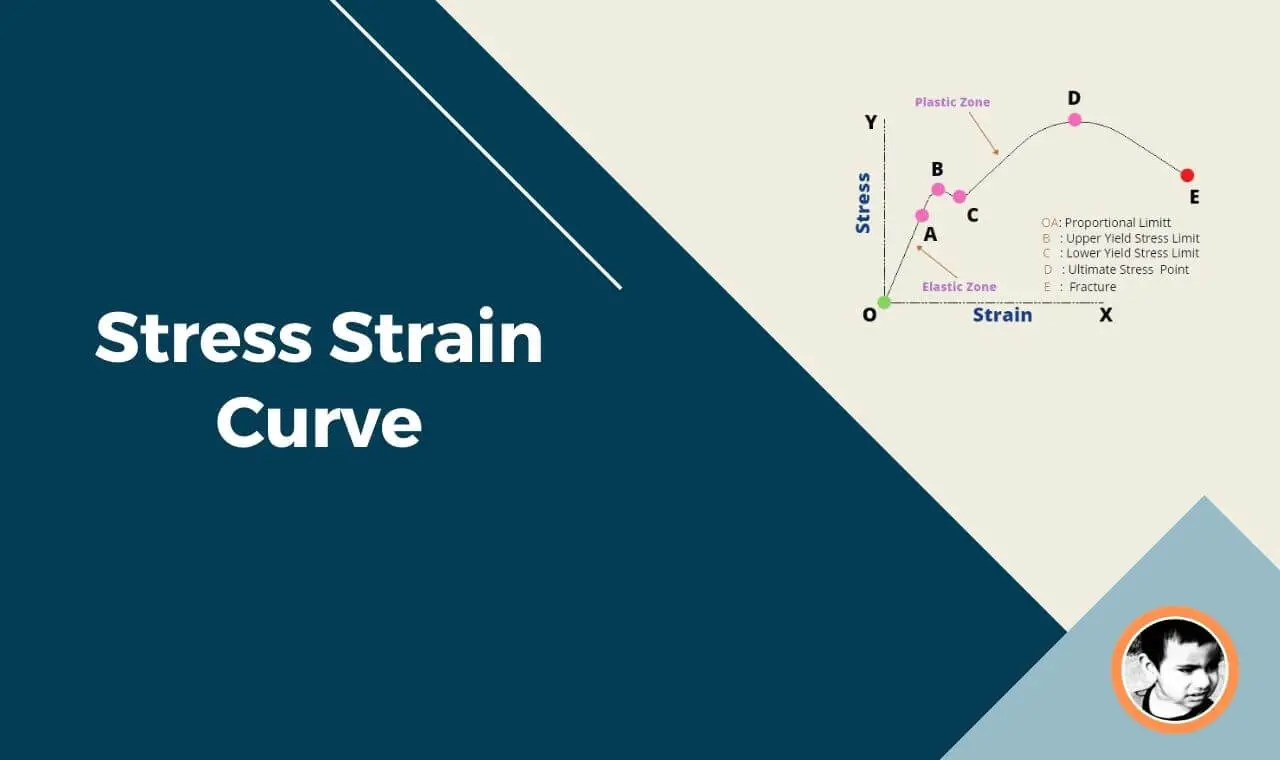While designing a product, A design engineer has to take care of Design For Assembly, Design for manufacturing, and most importantly the Factor Of Safety. The factor of safety is the most important aspect of product design. Any tolerance in the factor of safety can cause severe consequences. So in this article let us talk about what is a factor of safety, what is the factor of safety formula, and some examples.
What Is Factor Of Safety?
The factor of safety is the structural capacity of a system which determines the load-carrying capacity beyond its actual load. In other words, how strong the system is then what is actually required is called Factor Of Safety (FOS)
The factor of safety is critical to structures and often termed as the backbone of the system. It shows how strong is the system to take extra load than what is actually meant for. This helps the engineer to provide an extra cushion of confidence that the system won’t fail even if there is a bit of overload.
![Factor Of Safety: Factor of safety formula, definition & Examples [PDF] 1 factor of safety](https://www.riansclub.com/wp-content/uploads/2020/08/factor-of-safety-1-1024x1024.jpg)
To understand the factor of safety, let us take an example of a highway bridge. You might have noticed that, at the entrance, usually there will be one signboard which shows the maximum load that the bridge can take at a given point in time. Do you really feel that the bridge will collapse if we have a little bit more load on the bridge?
No, The bridge won’t collapse, but if the extra load is way higher than the limit mentioned, then there is a high chance that the bridge may collapse. So that extra load is the limit up to which the bridge is safe. That extra cushion is the safety limit.
Factor of safety is determined by the the following formula
Factor of safety = Actual Load / Working Load
Why Factor Of Safety Is Important?
The product is for humans. If a product is safe, the human is safe. That’s the whole concept. If a product is not safe, it will cause product failure and maybe the loss of human lives ( An example is a Highway Bridge). So every engineer focuses on making a product better so that it can save the product as well as save human lives.
Let’s take the example of the Boeing 737 max crash issue. Two aircraft was crashed in a span of 6 months. Travelers were not feeling safe, and they stopped boarding in any Boeing 737 Max. Because of that, Boeing lost all 737 max orders, which led to a big financial loss for the company. This also affects the traveler’s confidence in Boeing. So, just because 737 max did not have enough safety cushion, Boeing paid a high price for that.
The factor of safety is now a regulatory requirement for getting your product approved for the market. Safety is now an integral part of product design. Without a proper factor of safety, there is a high chance that you will never be able to bring your product into the market.
Here is a probable list of reason about why the factor of safety is so important.
- High chance that product won’t fail
- There will be fewer chances of human injury or death
- Products will be quickly approved by a regulatory agency
- Easy to launch a product in the market
- Less product recalls issue
- The number of service calls will be less
- Increased customer satisfaction
How to calculate factor of safety: Factor of safety formula
The factor of safety can be calculated in different ways. But ultimately all those methods check only one thing, the amount of safety load beyond its designed workload. There is a difference in the ways every process calculates and analyzes data, but the outcome is the same.
Whenever a part or item comes under load, it gets stressed depending on the type of materials. Ductile materials tend to have more stress than brittle materials. The amount of stress at the safety load is called safety stress or yield stress and the amount of stress at the designated design load is called working stress. The ratio of this safety stress and working stress gives us a factor of safety
Factor Of Safety = Yield Stress / Working Stress
If the factor of safety is 1, then it means that the design load is equal to the safety load. So for a better design, the factor of safety should be always greater than 1. If the safety of factor is less than 1, then the product is in the danger zone.
What is Design factor and safety factor?
Design factor is basically how much load a part is REQUIRED to withstand and the safety factor is the amount of load a part could ACTUALLY be able to withstand. So the design factor is the minimum requirement and safety factor is the limit beyond which the part will fail. At the minimum, the safety factor can be equal to the design factor.
To explain let us take an example of a part which has a design factor of carrying 3 LB load. But the part is actually designed to handle 30 LB load. So ideally the part still has a design factor of 3 but in actual it can withstand up to 30 LB which is the safety factor.
Design factor is the minimum requirement and usually set by regulatory. If an engineer is designing is a part with too much safety factor it is called “Overengineering”
What is margin of safety?
The margin of safety is the measure of excess structural capability. It is the additional load beyond the design load after which the part fails. If the margin of safety is 0, then the product will fail when it reaches its design load. If the margin of safety is 1, then the part can withstand load more than its design load. And if the margin of safety is -1, then the part will fail even before reaching its design load.
Margin of Safety = ( Failure load / Design load )-1 OR = Factor Of Safety-1
What is reserve factor?
Reserve factor is used in the European countries where the load and stress are expressed in the same units. Here is a formula for reserve stress
Reserve Stress= Proof Stress / Proof Load= Ultimate Strength / Ultimate Load
Determining factor of safety
Usually, design engineers do a load test to check safety stress and design stress. To determine the factor of safety we need to understand two common terms used in the strength of materials. Those are Yield stress and Ultimate stress
Yield Stress
Yeild stress is the stress limit after which the materials start deforming
Ultimate Stress
Ultimate stress is the stress limit after which the part fails.
To calculate the factor of safety for ductile materials we need to consider Yield stress as the safety stress and for brittle materials, we need to consider Ultimate stress as the safety stress.
Usually, for all known materials, values for yield stress and ultimate stress are readily available. If you use a composition material, then you need to run a load test to determine the value of yield stress and ultimate stress. Once you know these two values, you can find the factor of safety based on the design load.
You may like to read: What is a CNC machine? What are different types of CNC machine
Factor of safety examples
Below is a typical factor of safety of a couple of key product groups. The values are approximate and industries may follow a different value based on the loading condition.
| Equipment | Factor Of Safety |
|---|---|
| Boiler | 3.5-6 |
| Aircraft | 1.5-2 |
| Pressure vessels | 3.5-6 |
| Engine components | 6-8 |
| Cast iron wheels | 20 |
| Lifting hooks | 8-9 |
| Bridge structure | 5-7 |
| Building structure | 4-6 |
| Static turbine components | 6-8 |
| Rotating turbine components | 2-3 |
Drawbacks of using high factor of safety
One of the key considerations that many engineers take is that they choose a high factor of safety. They think that if you keep the factor of safety high, then the product will never fail. In contrast to that, a high factor of safety leads to unnecessary waste of effort and money. Product cost goes high to compensate for that high factor of safety.
Due to this, we should always focus on considering a factor of safety that keeps the product cost low but at the same time offers a maximum level of safety. Under-Engineering is dangerous but Over-Engineering is a waste.
Conclusion
The factor of safety is the key to any design engineer. It helps to make a safe product. All engineers should consider the factor of safety from the very beginning of the design life cycle. Each and every component need to be evaluated separately to determine the factor of safety. And at last, the engineer needs to evaluate the assembly factor of safety.
As I said earlier that we just can not compromise on the factor of safety. Because it affects the product and users who use that product. Having said that we also should not do over-engineering which eventually increases the product cost. We need to find an optimal value of the factor of safety to design a great product.
Frequently Asked Questions
What Is Factor of Safety
Factor of safety is the structural capacity of a system which determines the load carrying capacity of a system beyond its actual load
How to calculate factor of safety
Factor Of Safety = Actual Load / Working Load
What is good factor of safety
It depends on the product and loading condition. At a minimum it should be 1, there is no limit for the maximum. See the table in this article to get typical factor of safety values of different equipment
Factors on which factor of safety depends?
Actual load
Working load
Material type
Material density
Environmental condition



